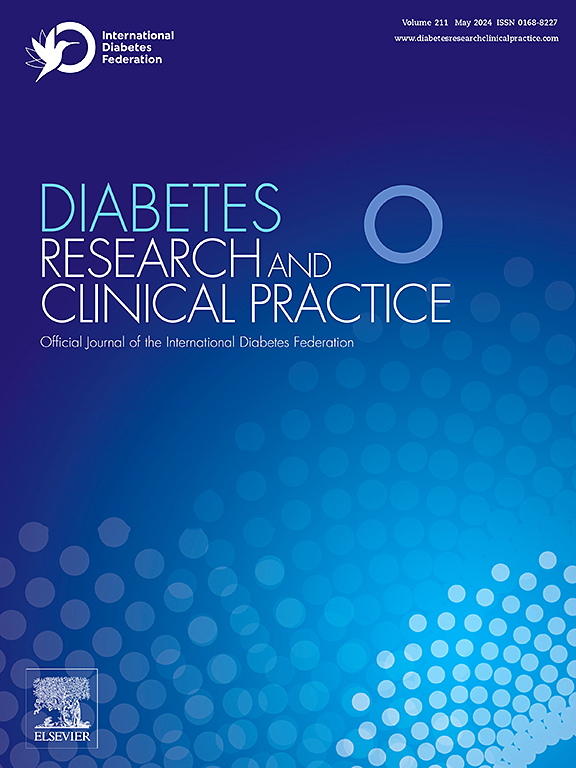英国生物银行队列中2型糖尿病的血浆蛋白质组学特征和相关特征
IF 6.1
3区 医学
Q1 ENDOCRINOLOGY & METABOLISM
引用次数: 0
摘要
目的血浆蛋白质组学有望作为一种诊断和预后工具,准确反映复杂的人类特征和疾病过程。我们评估了蛋白质预测2型糖尿病和相关特征的能力。研究设计:我们分析了来自三个UK Biobank亚队列的临床、遗传和蛋白质组学数据,以研究躯干脂肪、估计最大耗氧量(VO2max)和2型糖尿病的相关性。使用最小绝对收缩和选择算子(LASSO)回归,我们比较了数据类型之间每个特征的预测性能。评估了蛋白质组学特征(ps)对2型糖尿病临床风险评分(QDiabetes)的益处。双样本孟德尔随机化(MR)确定了每种性状的潜在致病蛋白。结果:lasso衍生的PSs比临床和遗传因素更能预测躯干脂肪和VO2max。我们观察到,当将2型糖尿病的PS与脂肪和健康相关的PS结合使用时,与QDiabetes评分相比,2型糖尿病的预测有适度的改善。双样本MR鉴定出一些蛋白质可能是导致每种特征的原因。结论血浆PSs可在临床和遗传因素之外适度改善2型糖尿病的预测。候选的因果相关蛋白作为2型糖尿病潜在的新治疗靶点值得进一步研究。本文章由计算机程序翻译,如有差异,请以英文原文为准。
Plasma proteomic signatures for type 2 diabetes and related traits in the UK Biobank cohort
Objective
The plasma proteome holds promise as a diagnostic and prognostic tool that can accurately reflect complex human traits and disease processes. We assessed the ability of proteins to predict type 2 diabetes and related traits.
Study design
We analyzed clinical, genetic, and proteomic data from three UK Biobank subcohorts for associations with truncal fat, estimated maximum oxygen consumption (VO2max), and type 2 diabetes. Using least absolute shrinkage and selection operator (LASSO) regression, we compared predictive performance of each trait between data types. The benefit of proteomic signatures (PSs) over the type 2 diabetes clinical risk score, QDiabetes was evaluated. Two-sample Mendelian randomization (MR) identified potentially causal proteins for each trait. Results: LASSO-derived PSs improved prediction of truncal fat and VO2max over clinical and genetic factors. We observed a modest improvement in type 2 diabetes prediction over the QDiabetes score when combining a PS derived for type 2 diabetes that was further augmented with fat- and fitness-associated PSs. Two-sample MR identified a few proteins as potentially causal for each trait.
Conclusion
Plasma PSs modestly improve type 2 diabetes prediction beyond clinical and genetic factors. Candidate causally associated proteins deserve further study as potential novel therapeutic targets for type 2 diabetes.
求助全文
通过发布文献求助,成功后即可免费获取论文全文。
去求助
来源期刊

Diabetes research and clinical practice
医学-内分泌学与代谢
CiteScore
10.30
自引率
3.90%
发文量
862
审稿时长
32 days
期刊介绍:
Diabetes Research and Clinical Practice is an international journal for health-care providers and clinically oriented researchers that publishes high-quality original research articles and expert reviews in diabetes and related areas. The role of the journal is to provide a venue for dissemination of knowledge and discussion of topics related to diabetes clinical research and patient care. Topics of focus include translational science, genetics, immunology, nutrition, psychosocial research, epidemiology, prevention, socio-economic research, complications, new treatments, technologies and therapy.
 求助内容:
求助内容: 应助结果提醒方式:
应助结果提醒方式:


